It is safe to say that Thorsmork, the forest of Thor, has a special place in the hearts of all Icelanders. Travelers mostly experience it in the summertime, but exploring Thorsmork in winter is something else. I have often visited Thorsmork in the summer, but I have only been there in the wintertime this March.
Subscribe to my newsletter for exclusive discount codes that will give you savings on 150 Iceland tours and travel services.
Subscribe to the Stuck in Iceland newsletterReceive exclusive promo codes for tours, car rental, camper van rental, and outdoor clothing rental. Get occasional updates about new content. I will never give your data to a third party without consent.
Thank you
Jon Heidar, Editor of Stuck in Iceland Travel Magazine

A majestic nature reserve is usually visited in the summer.
Thorsmork is a majestic nature reserve in Iceland’s southern highlands. It embodies the raw beauty and diverse landscapes Iceland is renowned for. This cherished destination draws photographers, nature enthusiasts, and adventure seekers alike, offering an unparalleled connection with nature. The Thorsmork Valley has a dramatic setting between the rivers of Krossa, Thronga, and Markarfljot. Above it sit the massive glaciers Eyjafjallajökull and Myrdalsjökull. Both glaciers have volcanoes underneath them. Eyjafjallajökull erupted in 2010, and everybody waits for the Katla volcano beneath Myrdalsjökull to go off. How that will affect Thorsmork and the rest of the country remains an open question.
The journey to Thorsmork is an adventure, requiring a four-wheel drive to navigate rugged terrains and cross unbridged and highly changeable glacial rivers. This isolation only adds to its allure, making it a pristine escape for those who venture there. Upon arrival, visitors see spectacular views, a campsite with essential amenities, and the starting (or end) points of Iceland’s most famous hiking trails – the Fimmvorduhals and Laugavegur trails. These trails offer everything from volcanic craters and glacier vistas to hot springs and colorful mountains.
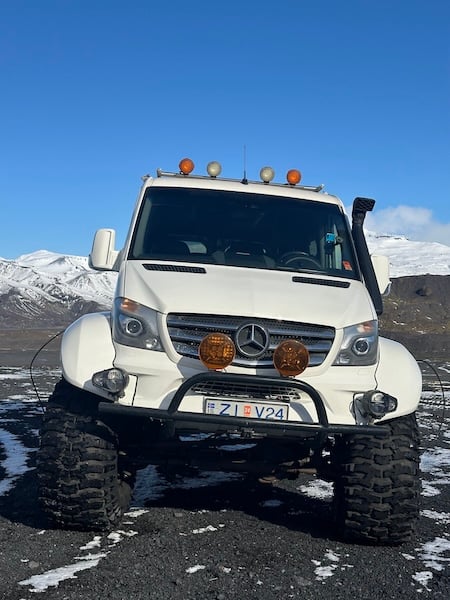
Joining Midgard to explore Thorsmork in winter
Usually, Thorsmork is only accessible in summer. However, there are exceptions. My wife and I were lucky to be invited to Midgard Adventure’s Thorsmork Super Jeep tour in March. We were so fortunate with the weather. The sun shone when we started from Reykjavik on a Sunday morning; it was a bright and brisk day. We had a lovely drive to the village of Hvolsvöllur, where Midgard accommodation is located and from where they operate their tours. Since Midgard is one of my many travel partners, you can obtain a discount code for their day tours and accommodation by signing up for my newsletter.
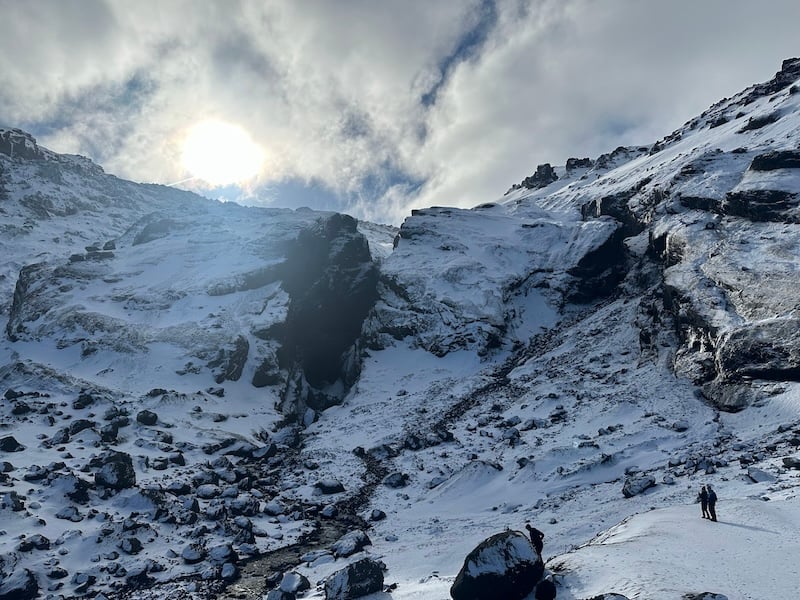
After a quick tour of Midgard’s cozy and convenient accommodation, we were invited to take seats in a massive super-jeep. The super-jeep was a modern and sturdy Mercedes with enormous tires. The group consisted of my wife and I, two couples, one French and one Italian, and a wonderful family of five from the US.
The guide, Bjarni, introduced himself to us. He was a level two glacier guide with extensive experience in guiding travelers on Icelandic glaciers. He expertly maneuvered his vehicle through the rocky, broken riverbed that forms the entrance to the Thorsmork Valley. The terrain is incredibly rough since the savage and unpredictable rivers there frequently change their course and wreak havoc on attempts to keep the route passable.
Woe to our KIA Sportage if we tried driving that while exploring Thorsmork in winter
My wife and I joked that our KIA Sportage would be immediately annihilated if we tried to take that through the first of many empty riverbeds with its steep and rocky banks, which we encountered. When we crossed the notorious Krossá River, I thought about all those people who had either perished or gotten into severe trouble attempting to ford that (excuse my language) angry bitch of a river. It was sedate when we crossed, but it was always tricky. Please do not attempt to cross it unless you are a river-crossing expert. I would never dare to try it myself.
We passed the wonderful Nauthúsagil ravine, and my wife and I reminisced about when we entered it. Of course, my wife went in there wearing high heels. I have to say that was entirely within the character of my Soprano diva.
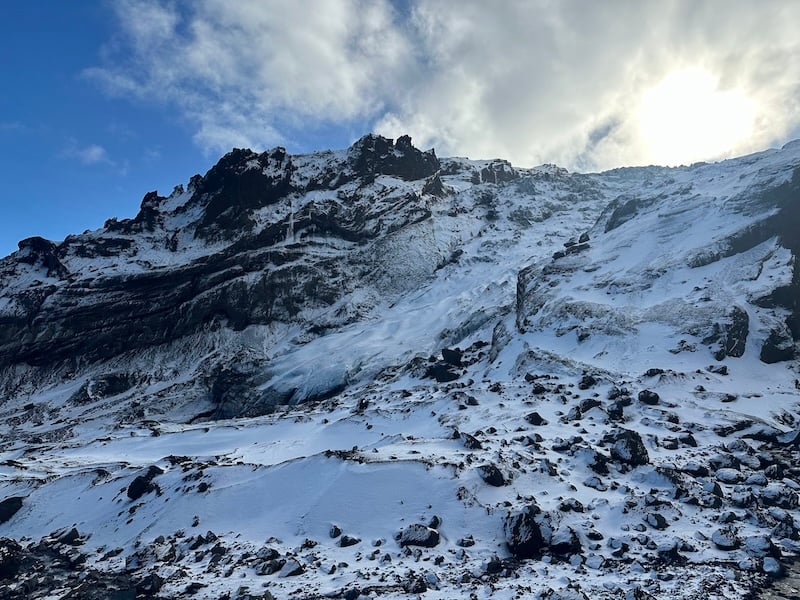
Seeing the majestic Gigjökull
In Thorsmörk, our first stop was the majestic Gígjökull crawling glacier. It has undergone tremendous change for the past century or so. Firstly, climate change is affecting Gígjökull as it has receded dramatically. Also significantly, Gígjökull was greatly impacted by the 2010 Eyjafjallajökull eruption. A tremendous amount of meltwater, rocks, ash, and pumice was trapped in a massive dam, which eventually broke with terrific flooding, what you see today at the Gígjökull site in the aftermath of that violent interaction of fire and ice. I took about ten thousand pictures there; it was so picturesque on this beautiful, sunny day. Even if we had just gone there, I would have been over the moon with this trip, but we pressed on.
Inspired to think about poor Bilbo Baggins
It was now time for lunch. We went to the huts at Thorsmork and had a lovely outdoor meal. Bjarni took out a prepared meal that was suitable for everyone.

Of course, everything tastes better outdoors, and the group was ecstatic when Bjarni brought out coffee and hot cocoa. After lunch, we headed to the impressive rock formation that topped Bólfell. It was a bit of a trek up snow-covered steps. However, it was easier to get up and down than we thought.
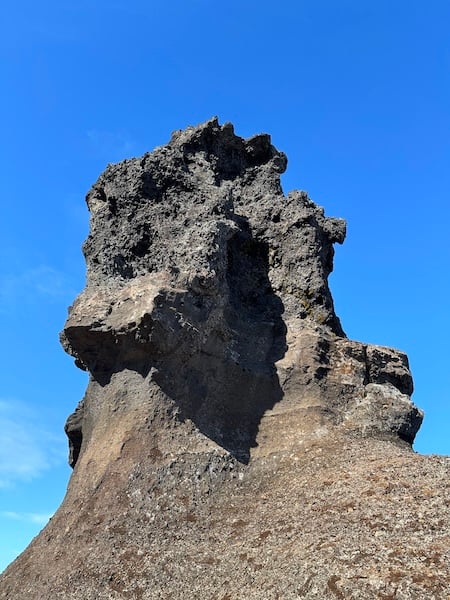
The view at Bólfell was majestic, but I was taken by the vast head-shaped rock stack adoring it. It reminded me of the scene in Tolkien’s timeless classic The Hobbit where Bilbo had a narrow escape from the three trolls who were petrified when sunbeams hit them while they argued about how to cook poor Bilbo.
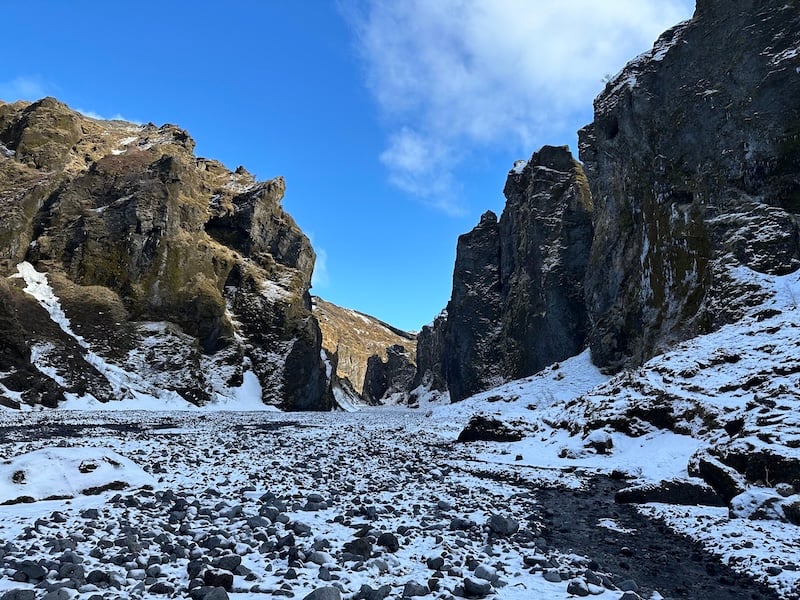
Seeing the canyon of Stakkholtsgjá
We then headed to the impressive canyon of Stakkholtsgjá. This beautiful natural wonder cuts some two kilometers in the landscape, and its walls reach about 100 meters, where they are the highest. A stream runs through the canyon and continues its quiet and relentless work of carving it. We didn’t go far into the canyon but spent much time there. The kids on the tour were very excited about a cave and the footprints of foxes that roam this area. Unfortunately, we did not see those elusive creatures. You would be surprised to learn that the Arctic fox is the only indigenous mammal in Iceland.
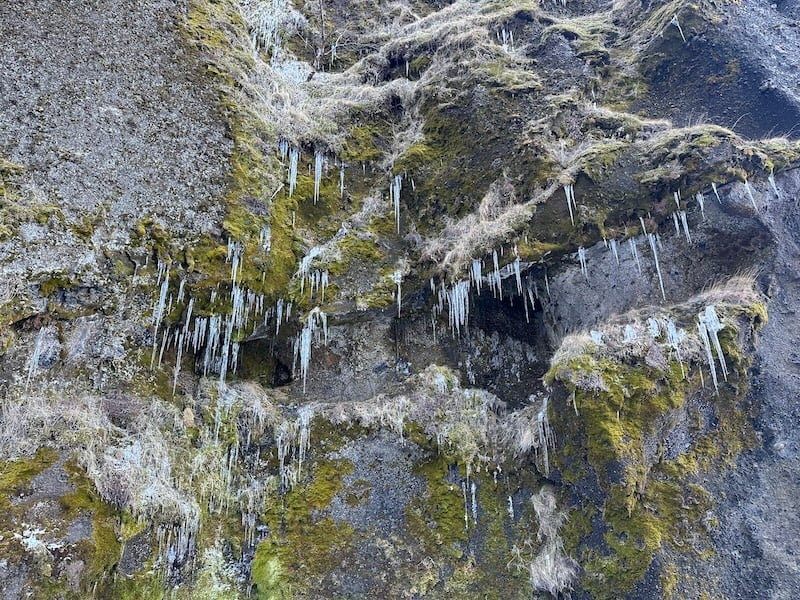
I was also very impressed with the beautiful interplay between moss and icicles on the canyon walls. I will change the background on my computer and iPad with pictures of that nature-generated art.
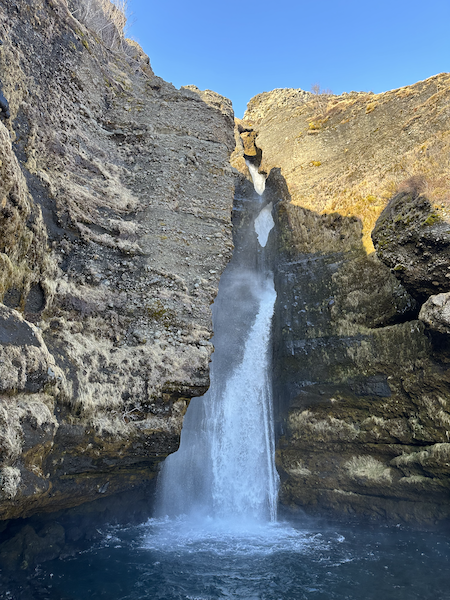
Then, it was time to go back. Just before we reached Hvolsvöllur town, we stopped at the beautiful Gluggafoss, or literally, window waterfall. It derives its name from the fact that the waterfall is visible through a distinct opening in the rock formation surrounding it. This waterfall is very pretty indeed.
Then, it was time to drive back home to Reykjavik from Hvolsvöllur. As I returned home, I felt very grateful to my friends at Midgard for giving me this change of exploring Thorsmork in winter.




